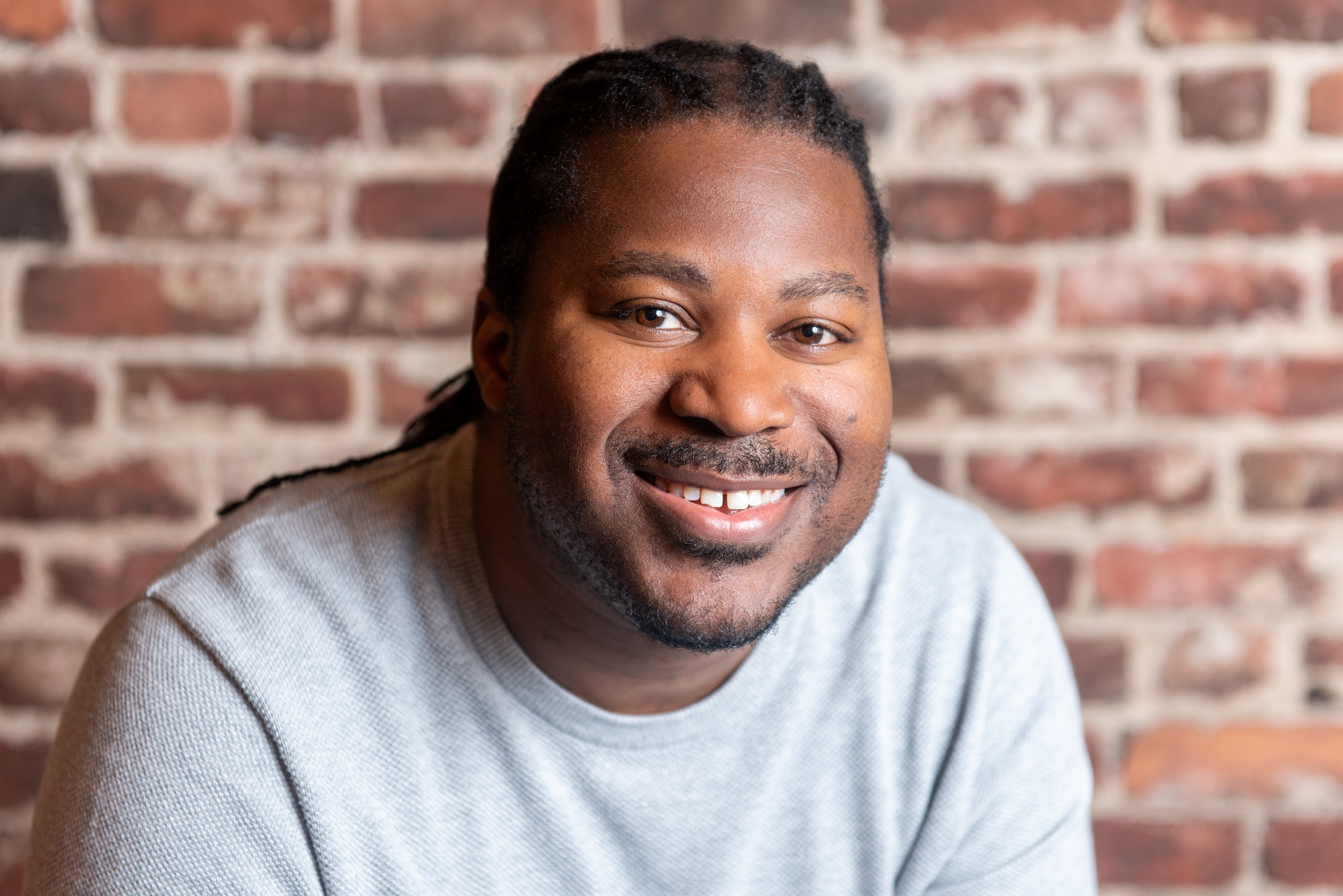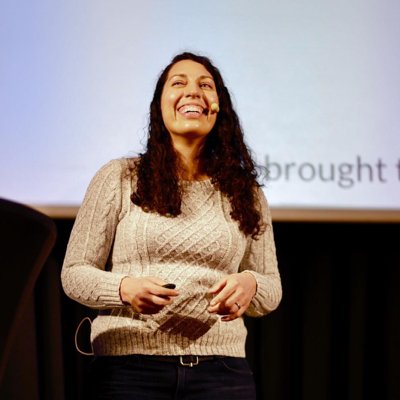Episode 2 covers the topic of accepting feedback with Emily Nakashima (@eanakashima on Twitter). Emily manages the engineering and design teams at a small developer tools startup called Honeycomb.io. Before Honeycomb, Emily worked at a string of developer tools companies and focused on frontend development and performance optimization.
We talk about how to better accept feedback, the correlation between accepting feedback and “growth mindset”, blameless retrospectives, and more!
Episode references:
Transcript
JENNIFER: Welcome to Storytime with Managers, a podcast microseries by Cohere.
Hi, I’m Jennifer Tu, and I’m here with Emily Nakashima to talk about feedback. Emily, could you introduce yourself, please?
EMILY: Hi, my name’s Emily. I manage the engineering and design teams at a small developer tool startup called Honeycomb.io. Before Honeycomb, I worked at a string of developer tools companies. And back as an engineering [IC], I tended to focus on frontend development and performance optimization.
JENNIFER: Cool. Speaking of Honeycomb, one of the reasons why I wanted to talk with you today is your manager, Charity Majors, the founder of Honeycomb. Co-founder? Founder?
EMILY: Co-founder, yeah.
JENNIFER: Co-founder of Honeycomb, mentioned on Twitter recently that you are one of the best people she’s ever met in terms of accepting feedback. So, I feel like there’s a lot of advice out there about how to give better feedback, but a little bit less around accepting feedback. And I’m wondering if you could share a little bit about what you do and how it helps.
EMILY: For sure. I think honestly, I heard that and I know that part of it is just that what you’re seeing there is that Charity is someone who’s very good at recognizing people’s strengths and abilities. I think she sees people on her team with great clarity. It was a nice compliment for sure, but I absolutely saw it as much about her as about me.
Which, I suppose, is actually a good segue into thinking about receiving feedback, because definitely it was something that was not always easy for me. I remember one as a young person, I think a lot of us don’t get very much feedback, honestly, especially I went through the public school system. There were always large classrooms. I just never interacted one on one with people who really cared about my performance in whatever I was doing very much. And so, I found it really uncomfortable at first. I think there’s kind of a few different pieces that came together that made me not just learn to accept it gracefully, but really love that experience of just hearing people reflect on what you could do better. I really see it as one of the most generous things people can do for you. Is it useful to just sort of break apart the different aspects of the bit?
JENNIFER: Sure. One thing that I’m thinking about is that I find it incredibly reassuring to hear that this is something that you can learn. Because I’m also terrible, or not also, I am terrible at receiving feedback. And I’ve gotten to a point where I can sometimes take it if I’m prepared. But maybe we should start a little bit earlier. If you’re just starting out and you want to improve yourself at accepting feedback, how do you start?
EMILY: That’s a great question. I think for me, part of it was a mindset change. I grew up really with that kind of fixed mindset. I think, as a kid, I would be surrounded by people who said your talent is in X. You don’t have talent in Y. You should focus more on X. And I remember thinking of ability as something that mostly you either had or you didn’t.
JENNIFER: You’re either good at Math or you’re not.
EMILY: Exactly. Or you’re good at sports. These kids are in gifted education. These kids will never be in gifted education. I’ve been really lucky to work at Honeycomb and a few other places like that that really had a growth mindset around thinking about how do we develop skills. how do we get better at things? And so, being able to make that switch, honestly for other people first, like being able to say for people on my team, I need to believe in a growth mindset so that I can help them develop and help me make the switch for myself. And then once I made that kind of mental leap, it was so much easier to not take it personally, to not hear constructive feedback as a negative reflection on me. It just meant that, “Oh, here’s something that I can spend more time working on and get better at.” So it became a new challenge instead of an indictment of my character as a person, if that makes sense.
JENNIFER: Yeah. I had never thought about it that way. So what you’re saying is that moving from a fixed mindset to a growth mindset allows you to be in a space where you can start thinking, “I can improve and that allows me to accept feedback.”
EMILY: I think just sort of making that mental leap to the growth mindset made feedback so much less scary because it was a fun challenge. I think like a lot of people in software, I love to always be learning new things and always taking on new challenges. And so it sort of just became like learning a new programming style or something like that. It was just sort of, “Okay, here’s one more thing that I can try to work on and kind of measure my skill set and see if I got better at.”
JENNIFER: How about when you’re in that awkward partway phase and you know what you want to do, but you’re not able to implement it? Do you have any advice for people like me who are in that space?
EMILY: Oh, gosh. Honestly, this is going to sound a little strange because it’s something very outside of tech or outside of management. But there is a book that I really like that really, I think, made that process feel a little smoother to me. Have you heard of a book called The Four Agreements?
JENNIFER: It’s ringing a bell and I don’t know why.
EMILY: There are people who are interested in management who talk about it a fair amount, but it really comes more from almost like spirituality. This is someone who wrote down what he saw as like Toltec wisdom that came from his ancestry. But he sort of had these four principles for a life well lived. It doesn’t resonate with me on a religious level, but I kind of saw the sense behind what he was saying and tried to incorporate those things into my life. And I’ll just say them really quickly and not get too deep into them. But they are: always do your best, don’t make assumptions, be impeccable in your word. So, just speak truth and and don’t speak against people unnecessarily. And then – oh, gosh, I’m going to forget the fourth one. [laughs] I can look it up.
But thinking about not making assumptions and always doing your best. Those two things, I realized so often I would read more negativity into those things than what’s really there or I would read more personal criticism than what’s there. And it was something that came from me and me feeling bad about where I was at or wanting to be better. And I realized that I was causing myself unnecessary pain by taking things more personally. The fourth one is nothing is personal. Yes. [Laughs] Nothing is personal. People share things with you based on where they’re at and what they see. And so often, it’s more about them than about anything to do with you.
And so, sort of being able to think about the feedback interaction that I’ve had with someone as much about them as about me and about something that all I needed to do to be successful with it was try the best to incorporate it into my life. And then I didn’t have to be really hard on myself for feeling like there was something wrong with me or like I didn’t do enough for the feedback. I know it sounds really strange, but just sort of taking all four of those things into my life suddenly made some of the sort of painful parts of feedback less painful, if that makes any sense.
JENNIFER: Yeah, it does, because you’re not taking it personally and you’re assuming the best out of the other person. So it’s harder to say, “Oh, they think I’m an idiot,” because you’re thinking about, “They’re doing their best to help me and give me feedback.”
EMILY: Yeah. And even honestly, if it comes through that you feel like this person does think I’m an idiot, you realize oh that says more about there in the negative place. Something is difficult for them. They probably you know, it says more about the situation that they’re in than some sort of reflection upon my worth as a person. And I found that really helpful.
JENNIFER: Yeah. Are there things that help you get into that mindset or breakfree of, I guess, the fixed mindset that you’re in?
EMILY: I said this a little bit earlier, but I think that honestly for me, having my own team and working with people on my team was something that really transformed the way I thought about that. As a manager, I really want to support people on my team and constantly improving in having an easier path through their software career than I felt like I did earlier in my career. And realizing that I could want that for them helped me say, “Why don’t I think that I can have that for myself?” So, just sort of every moment that I can see myself being generous with helping someone else level up, I can say, “Why don’t I just extend that to myself too. Why don’t I just try that and see if I get positive benefits out of it the way that I know someone at my team would?” It’s kind of funny because it’s taking your management skills and then applying them back to managing yourself. It took me a while to realize I could do that, but it’s been useful.
JENNIFER: It makes it not a do-what-they-say, but do-what-I-do kind of a thing.
EMILY: Exactly. Yeah, that makes a lot of sense.
JENNIFER: I’m kind of curious, am I the first person to ask you about how to accept feedback or have you had this question before? Do you help any of your reports or teammates with accepting feedback?
EMILY: Gosh, I think a lot of people don’t ask about it because they feel like it should be easy. And they don’t think of it as a skill. You know what I mean? I like that you approach it as this is like a learnable skill that we can kind of think about how to develop, and I think a lot of people find it painful and assume that it’s necessarily painful or think that it should feel easy and don’t think that it’s something they should work on. So, you are the first person to actually ask me about it explicitly.
JENNIFER: That’s pretty cool. Do you ever try to help people around you accept feedback more or do you focus more on how you can give feedback better?
EMILY: Definitely both. It’s really important to me to have a diverse engineering organization, and that means people from all different genders, different racial and ethnic backgrounds, different educational backgrounds. And part of that has been seeing all these different ways that people respond to feedback and accept feedback. So, I have certainly been working on tuning my individual style to the way that resonates the most with each person. I think some people really need to kind of have their confidence built up before they can on-board a negative thing. Like some people are just in a space all the time. They’re feeling like they’re working on everything. So you really need to say, “These things are going great,” before you can help them see the one thing that would be the biggest way that they could have a higher impact.
Also, I think the biggest thing that I do in terms of encouraging people to accept feedback well is reminding them that it’s not personal and that feedback is someone recognizing potential in them. You don’t give feedback to people whose work you don’t care about or people who you think are a lost cause. So, I think I do a fair amount of kind of putting the context around feedback to try and make it more useful to people.
JENNIFER: Implementation detail question. When do you tell people what that feedback is, is about people caring about them and wanting them to improve? Do you give that to them before, after, or during feedback completely separately from giving feedback?
EMILY: In the past, I feel like I’ve done it because I have seen that a piece of feedback seemed like it was particularly difficult to on-board or I saw someone really struggling with how to fit it into the larger picture of their work. I think if I were a perfect manager, I would know ahead of time that they needed that preamble and put it into the front. But so far, it’s mostly been a course correction.
JENNIFER: So, it’s you give feedback, they look like they’re struggling accepting it, and then you reframe the feedback for them.
EMILY: Exactly.
JENNIFER: And that works? It sounds almost too easy.
EMILY: [Laughs] I think it was better than not doing that, for sure. Like you were saying, I think it’s a process for people to figure out the right ways to incorporate feedback into their lives. So, I think you can help people do a slightly better job, but like any skill, it’s something you’re kind of constantly improving on.
JENNIFER: What about building feedback into your work culture? We’ve talked a little bit about how we can accept feedback better and we’ve talked about how we can help those around us accept feedback better. Are there things that can help an engineering team build more feedback culture around how to accept feedback? I’m really focusing on this accepting feedback side because there’s been so much good material out there on how to give feedback.
EMILY: That’s a great question. I think that there’s some tools that have become popular, at least in the kind of San Francisco engineering bubble that I’m in, that I think are really useful. One is the kind of culture around blameless postmortems that has come from people in the kind of more operation space and then the kind of culture of agile retrospectives that has come out of places like pivotal or like Agile XP shops. I think both of those processes are really interested in looking at how a project went or how an incident went in a way that is all about ‘what can we learn from this’. And even though that’s not focused on a personal one to one feedback, I think just sort of modeling, taking an experience like that apart and sort of looking at the different pieces and using it as a way to think about improvement is something that I see kind of directly translate to people’s interactions with each other. You can’t really talk about how a project went without talking about individuals’ work on their project. And I feel like as soon as we come out of the retrospective, there is sort of a period of time where that same way of talking about and thinking about work flows into the way you talk about how everything is going. So, that’s been a really good tool.
I come from a design background. So I’m used to the sort of juried review or critique system that designers use to talk about their work. And that’s also been really useful. I think that the spirit of that is not as much about improvement, but how can we have an interesting conversation about this artifact that’s in front of us? So again, it’s a way of talking about a particular person’s work in a way that’s detached from judgment. So, you have to learn to want to jump into that. And as the receiver of the feedback say, “How can I also participate in this interesting conversation about my work,” rather than be defensive about, maybe someone doesn’t like something and I might respond poorly to that. You really have to let go of ownership to have that interesting conversation in some ways.
[Crosstalk]
EMILY: For sure, yeah.
JENNIFER: I want to go back to what you said earlier about blameless retrospectives. It made a ton of sense as you were talking about how if you have a blameless retrospective, part of that has to be feedback to the individuals because how else do you improve? And then they started feeling a little bit confused because how do you keep it blameless? And at the same time, be able to give that feedback to individuals in a way that they can accept and not say, “Oh, I broke production, I caused this.”
EMILY: Honestly, the balance is really tricky. I think the thing I really like about the kind of blameless postmortem or blameless retrospective way of thinking is that it decouples understanding the chain of events and the impact of different things in the chain of events from passing judgment on that particular thing. I think that they often take a systems approach too and say, “Okay, this person did this not because they were a bad person, but because X, Y, and Z cues in our environment or our system made it seem like the right idea.”
So, I think that the more you can kind of emphasize all of the factors that are around that, the less it feels personal. And I think as a recipient of that, part of it is I think you do need to be a little generous with yourself and say, “I don’t need to be the hero who, despite all these things putting me in the wrong direction, still do the right thing.” It kind of intersects nicely with the emphasis on getting rid of hero culture that I’ve kind of seen lately in the DevOps movement, which I really like, which really encourages you to say, “I don’t need to have unrealistic expectations that just I, as one person, am going to be better than everyone else and fix everything, even though everything’s broken.”
JENNIFER: Yeah. And I guess the [inaudible] to that is when production goes down. If you weren’t that one person who fixed everything, obviously you’re the one person who caused everything to fail. And that’s the flip side of hero culture.
EMILY: Exactly. Totally. It’s very double edged. I think that some people have a really positive experience with it before they see the negative and then it’s harder to give up. But it really does cut both ways, for sure.
JENNIFER: Are there things that you can do when you’re in that team environment or in that blameless retrospective where someone is using the sharp side toward yourself part of the hero culture blade?
EMILY: I think it’s one of those things that the more you can have folks at the top model both not blaming others and not blaming themselves and using it as a learning opportunity, the better it is. I think it’s really hard if you are kind of lower in the management chain and you want to bring blameless culture to things and the rest of the organization is looking for someone to place the blame on. Just seeing it modeled by the people at the top has always been the thing that I’ve seen to be the most helpful.
JENNIFER: Do you think it would be valuable to start off blameless retros talking about fixed versus [inaudible] and kind of setting that expectation?
EMILY: Ooh, that’s a great question. Yeah, I have seen people have a lot of success with just sort of reminding people of what the principles of a retrospective are ahead of time. Lily [Chaline], who we both know through kind of Ruby universe and volunteering things, has this wonderful one-page PDF handout that she shares with people that just sort of has like the bullet points of what a retrospective is. And she’ll share it even with people who’ve done retrospectives before, because I think just having that cue to remind yourself, “This is the mindset you’re supposed to be in. This is what we’re supposed to get out of. This is really, really helpful.”
JENNIFER: Yeah. And it kind of goes into the idea of anytime you start a meeting, you should make sure everyone in the room knows why they are in that room.
EMILY: Yeah. I like that. It’s not just like that you know the agenda, but that you know that the mindset you’re supposed to be in, in the moment.
JENNIFER: I think this is all the time we have for digging into feedback for today. Do you have any closing words of advice to our listeners?
EMILY: I think the number one closing word of advice I would have for people is just if you can believe in it for other people, if you can be generous with other people about something, you can also turn that around and extend it yourself, too. Because I see so many managers who are so good at sharing feedback with their team, helping people accept it gracefully, and then all of a sudden when it’s them, they go back to believing all those things about, “It’s personal. There’s something wrong with me.” Look at the interactions you have with other people and ask yourself if you’re giving yourself that same space.
JENNIFER: Oh, I have totally done that. That is really great advice. Thank you. If people want to read what you’re saying, talk with you, hear more about things like this, any place where they should look?
EMILY: The best place is probably just to find me on Twitter. I am @eanakashima on Twitter. And I’m always happy to talk about management feedback and whatever else on there.
JENNIFER: Cool. All right. Thanks, Emily. This was fun.
EMILY: Thanks so much.
JENNIFER: Thanks for listening to Storytime with Managers by Cohere. Our theme music is by Kevin MacLeod and we are edited by Bryant from Zinc. If you like this episode and want to hear more, tell us on Twitter. We are @wecohere.





